17 Fun Facts About Crabs

Crabs are some of the most fascinating creatures that inhabit coastal areas around the world. With over 4,500 known species, these crustaceans come in a remarkable variety of shapes, sizes, and colors. From their unique anatomy to their intriguing behavior, crabs have plenty of surprises in store for those interested in learning more about them.
Introduction
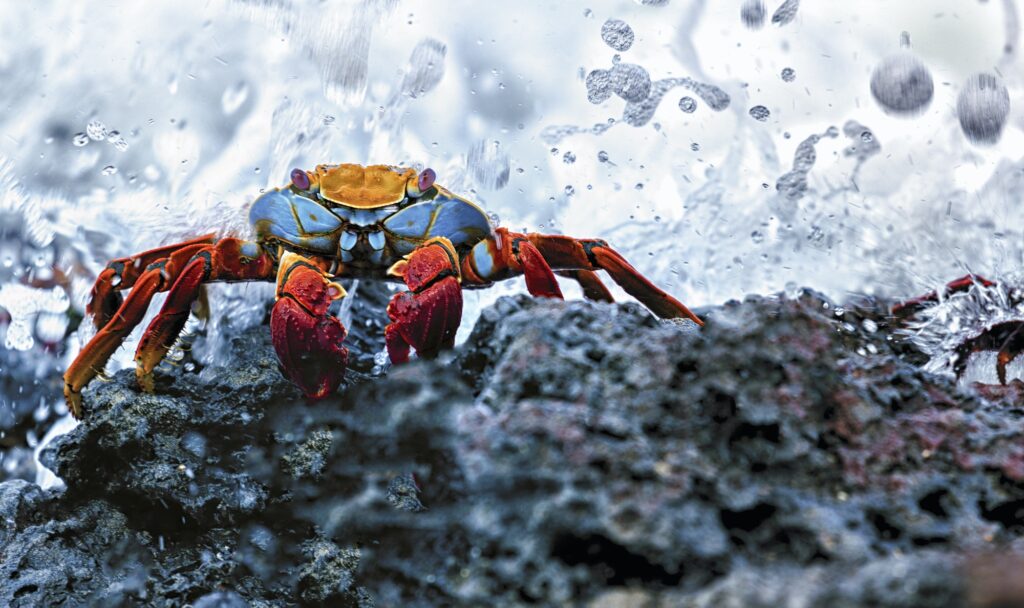
With their hard, protective exoskeletons and sideways scuttling, crabs are some of the most recognizable creatures found near ocean shores. They belong to the subphylum Crustacea along with lobsters, crayfish, and shrimp. True crabs can be identified by their short tails folded under their bodies and the presence of only four pairs of walking legs. Their front pair of legs have adapted into claws used for defense, hunting, and communication.
Crabs inhabit all of the world’s oceans and can also be found in freshwater environments. Some species even spend their lives on land. From tiny pea crabs to giant Japanese spider crabs with 12-foot-long spans, these animals come in a huge range of sizes. Their diverse adaptations allow them to thrive in a variety of habitats.
Let’s take a closer look at these captivating crustaceans with these 17 fun facts about crabs!
1. Crabs Have a Thick Exoskeleton
Crabs have an outer skeleton known as an exoskeleton that protects their bodies1. This exoskeleton is made of a tough material called chitin that also provides attachment points for their muscles. Their exoskeleton comes in two main parts – a sturdy upper shell called the carapace that covers the crab’s organs and a lower shell that covers the underside.
The exoskeleton protects crabs from predators and enables them to inhabit rocky and surf-swept coastal areas. Its hardness and rigidity allow crabs to apply force and grasp objects firmly with their pincers.
2. They Have 10 Legs
Crabs belong to a group of crustaceans called decapods, which means “10 feet”2. They have five pairs of legs for a total of 10 appendages. The front pair of legs has enlarged pincers or claws used for defense, hunting, and manipulation of objects. The next four pairs are walking legs and allow the crab to move in their characteristic sideways motion.
Having 10 legs gives crabs stability and allows them to navigate a variety of environments, from sandy beaches to rocky tide pools. The back pair of legs is usually flattened for swimming.
3. Crabs Have Small Eyes on Stalks

Crabs have eyes that are very different from human eyes. Their eyes sit on short eyestalks that can move independently of each other. This allows the eyes to extend out beyond the hard carapace shell to improve the field of vision.
Their eyes are compound, meaning they are composed of many smaller units called ommatidia. Each ommatidium acts as an individual photoreceptor. Having many ommatidia gives crabs a wide field of view to help detect movement and threats.
Some crabs even have light-sensitive spots on their eyestalks that can detect light and dark. This helps them establish circadian rhythms.
4. They Have a Unique Circulatory System
Crabs have an open circulatory system where blood flows freely within the body and is not restricted to blood vessels. Their blood is pumped by a heart into spaces called sinuses.
Interestingly, crab blood is not red like human blood. Instead, it is a pale bluish color due to the presence of copper-containing hemocyanin. This protein pigment carries oxygen just like the iron-containing hemoglobin in human blood3.
5. Crabs Can Autotomize Their Limbs
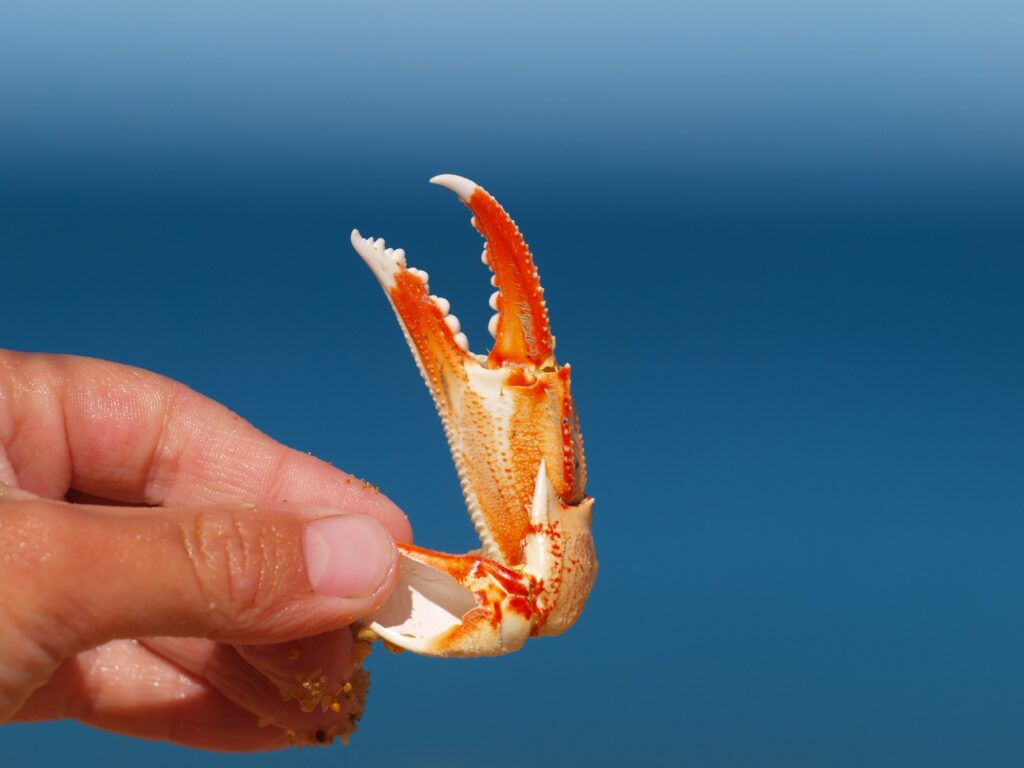
Many crabs can autotomize or self-amputate their limbs when threatened. They intentionally release their limbs when attacked so they can escape from predators more easily. Their limbs will then regenerate over a series of molts.
Autotomy usually occurs at a weaker fracture plane found where the limb joins the body. Tendons are designed to break easily at this point when the crab feels threatened. Claws are autotomized more readily than walking legs since they are more prone to attack4.
6. They Have a Unique Molting Process
In order for crabs to grow, they must periodically shed their rigid exoskeleton in a process called molting. Adult crabs molt once or twice per year, while young crabs may molt several times per year.
Prior to molting, crabs reabsorb some of the calcium carbonate from their old shell then secrete enzymes to separate the old shell from the underlying skin. The shell then splits along the back edge and the crab extracts itself. A new soft shell rapidly hardens to provide protection.
7. Crabs Have Antennae
Crabs have two pairs of antennae to help them sense their environment. The longer, upper antennae function primarily as chemical sensors and detect odors in the water.
The shorter, lower antennae are used for touch and vibration sensing. Having both pairs of antennae gives crabs detailed sensory information about their surroundings.
8. They Have a Unique Digestive System
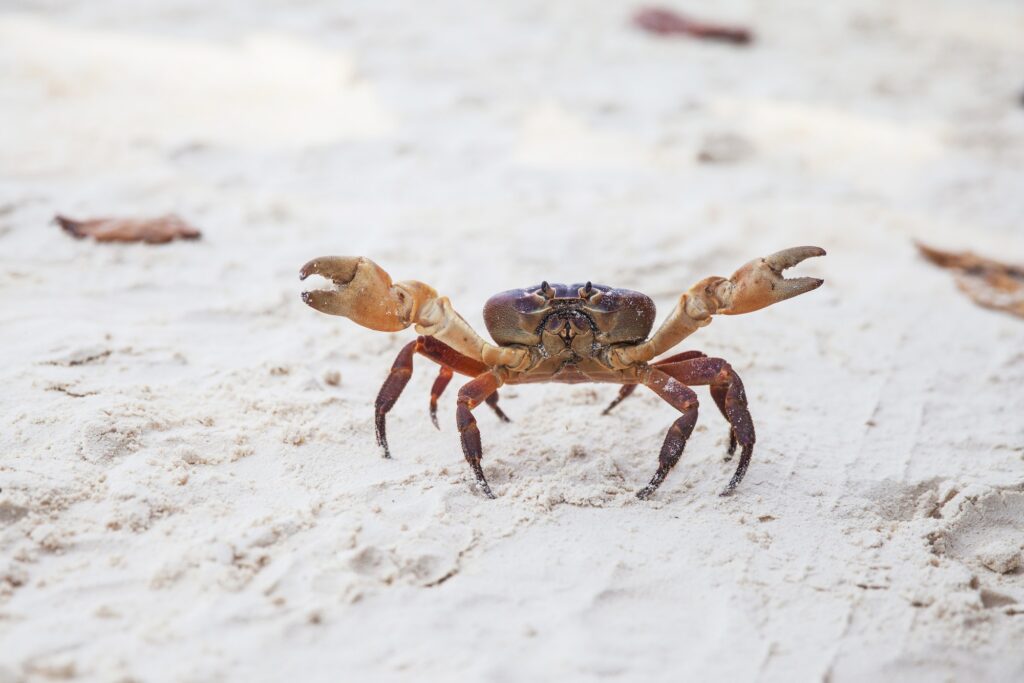
Crabs have a digestive system suited to their diet of both plant and animal matter. Their mouthparts grind up food that then passes into the esophagus and stomach.
Interestingly, crabs have teeth-like structures in their stomach called gastric mills that further crush food. The gastric mill consists of several ossicles that grind against each other to break down the food into even smaller particles before passing to the digestive gland.
9. Crabs Have Gills and Some Have Lungs
Most aquatic crabs breathe with gills that extract oxygen from the surrounding water. Gills are specialized structures that contain many folds to increase surface area for gas exchange.
Some semiterrestrial crabs that live on land have gills that function like lungs to supplement oxygen intake. These crabs may have gill chambers that trap moisture to keep the gills from drying out. Other terrestrial crabs have lungs connected to openings called spiracles on their bodies.
10. They Have a Distinct Larval Phase
Crabs undergo several different larval phases after hatching before taking on the familiar adult crab form. The earliest larval stage is called a zoea and these mini crustaceans look more like a shrimp than a crab.
After molting through several zoea stages, the crab enters the megalopa phase where it starts to develop its crab-like appearance. After one final molt, it achieves the adult form. The larval stages allow the crab body plan to gradually take shape.
11. Crabs Have Distinct Courtship Rituals
Crabs employ some interesting courtship displays and mating rituals. Male fiddler crabs, for example, attract females by waving their oversized claws in the form of semaphore signaling. Other rituals involve mating dances, touching, and even singing by rubbing body parts together.
In some species, the female then leads the male back to her burrow to mate. The male will stay to defend the burrow until the eggs hatch.
12. They Have a Short Lifespan
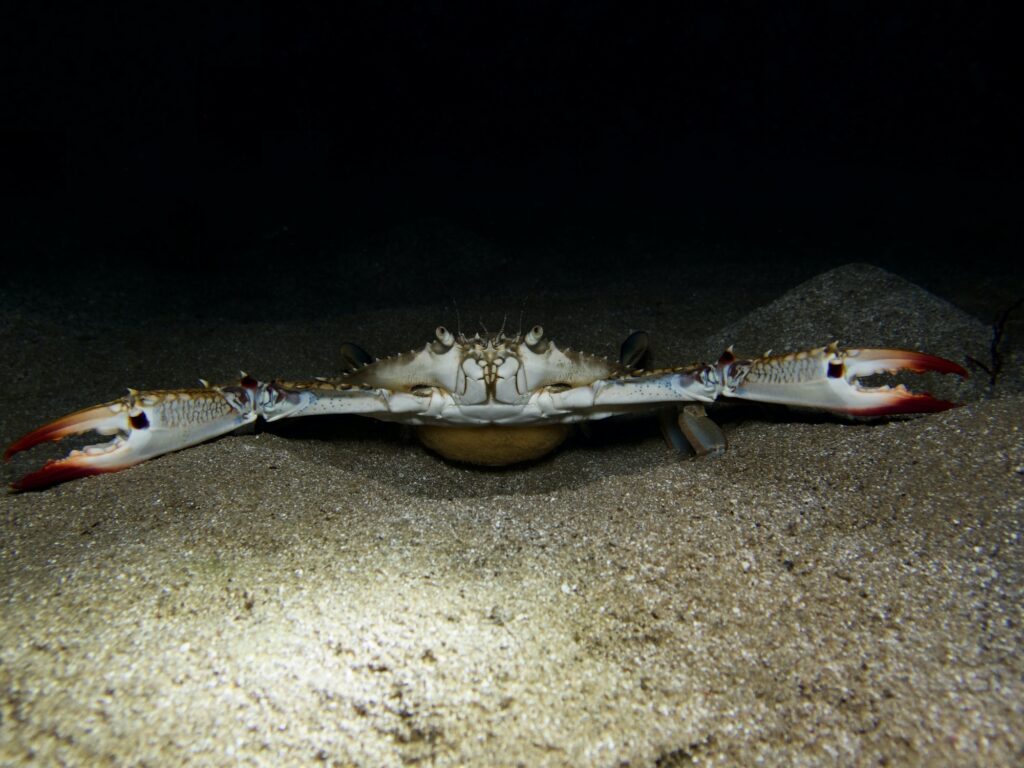
Most crabs live just a few years, but some of the larger species have impressively long lives. Smaller crabs like fiddler and hermit crabs may only survive 1-3 years in the wild. Larger king and spider crabs can live for over 20 years.
The lifespan of a crab depends on its habitat, the presence of predators, and its success at reproducing. Their short lives motivate them to mature and reproduce quickly before their demise.
13. Crabs Are Highly Social
While they may seem solitary, crabs are actually quite social creatures. They form aggregations, communicate to find food and mates, and even care for their young.
Some crabs, like fiddler crabs, live in large colonies made up of burrows. They use signals like claw waving to maintain social structure and relationships within these communities.
14. They Have Impressive Camouflage Abilities
With their armored shells and ability to sit motionless, crabs are masters of camouflage. Their mottled colors allow them to blend into their surroundings, whether it’s a rocky tidepool or a sandy beach.
Some crabs take camouflage further by decorating themselves with debris like seaweed, sponges, and sand to break up their outline. This makes them incredibly difficult for predators to spot when they sit still.
15. Crabs Are Highly Adaptable
With around 5,000 species occupying diverse habitats, crabs have proven to be a highly adaptable group. Different adaptations allow crabs to inhabit environments ranging from the frigid Arctic to the boiling waters of hydrothermal vents.
Some crabs can even switch between breathing water and air, allowing them to move between aquatic and terrestrial environments. Their adaptability likely contributes to their evolutionary success.
16. Crabs Are Both Prey and Predator
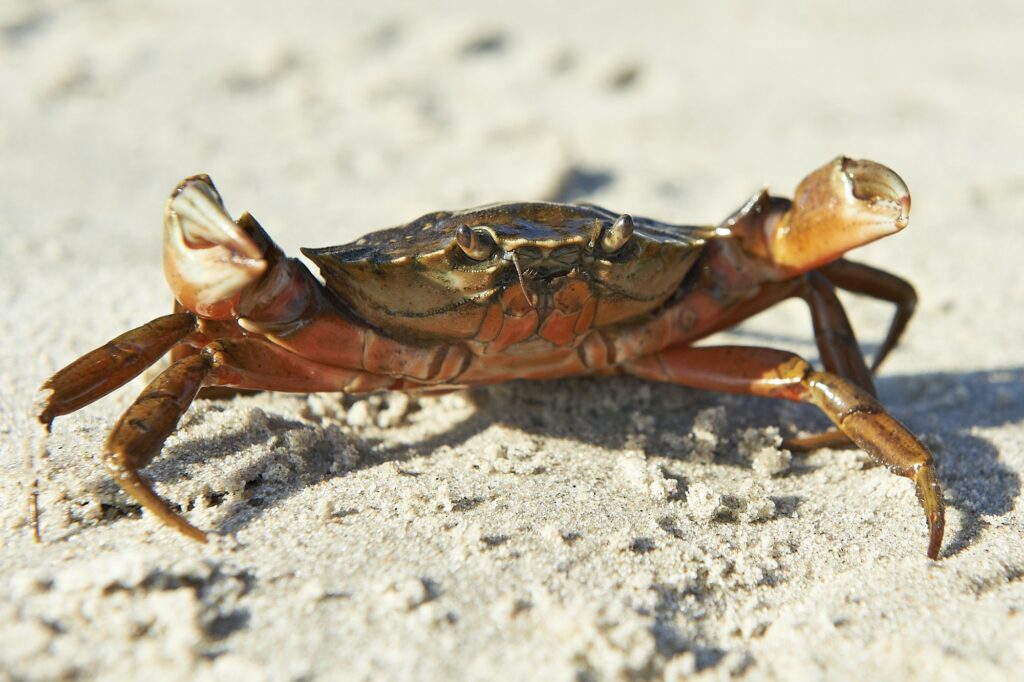
Crabs occupy multiple levels of the food chain, acting as both predator and prey. Smaller crabs are eaten by fish, octopuses, sea birds, sea otters, and even other larger crabs.
At the same time, crabs are opportunistic predators themselves, feeding on worms, clams, barnacles, snails, and other small animals. Their position provides an important energy transfer within coastal ecosystems.
17. Some Crabs Have Symbiotic Relationships
The association between boxer crabs and sea anemones is one example of an intriguing symbiotic relationship in the crab world. Boxer crabs carry a pair of anemones in their claws for protection.
The stinging tentacles of the anemone deter potential predators. In return, the crab provides the anemone with food particles and increased mobility. It’s a win-win situation for both species.
FAQ
What are the main characteristics of crabs?
Crabs are identifiable by their short projecting tails, hard exoskeletons, and sideways walking style. They have four pairs of walking legs and a pair of front legs equipped with pincers for various uses including defense and feeding.
How do crabs grow if they have a hard exoskeleton?
Crabs grow by a process called molting, where they shed their old exoskeleton and grow a new, larger one. This happens periodically throughout their life, with young crabs molting several times a year and adults typically molting once or twice a year.
Can crabs live both in water and on land?
Yes, crabs are highly adaptable and can be found in all the world’s oceans, freshwater, and on land. Some species have evolved to breathe air and can spend a significant amount of time out of the water.
Do crabs have any unique behaviors or social structures?
Crabs are known for their complex social interactions, which include courtship displays like semaphore signaling with their claws. Some species, like fiddler crabs, live in large colonies and use claw waving to communicate and establish social hierarchies.
What role do crabs play in their ecosystems?
Crabs are both predators and prey within their ecosystems, feeding on a variety of organisms and being eaten by larger animals. They help maintain a balance in coastal and marine food webs and some species engage in symbiotic relationships, like boxer crabs with sea anemones.
Conclusion
Crabs are truly captivating creatures that come in a huge variety of shapes, sizes, and colors. We’ve explored some of their most fascinating adaptations and behaviors, from their armored exoskeletons to their impressive camouflage abilities. Their specialized anatomy allows them to thrive in diverse coastal and aquatic regions.
Crabs play important roles in their ecosystems both as predator and prey. They have complex social interactions and mating rituals. While their lifespan is relatively short, larger species can survive over 20 years. From tiny pea crabs to giant Japanese spider crabs, the diversity of crabs is astonishing. Their unique biology and behaviors will continue to enter those who take the time to appreciate these incredible crustaceans.
- https://en.wikipedia.org/wiki/Crab [↩]
- https://animals.mom.com/science-how-many-legs-does-a-crab-have-6273200.html [↩]
- The Decapod Crustacean Circulatory System: A Case That Is neither Open nor Closed, cambridge.org [↩]
- https://en.wikipedia.org/wiki/Declawing_of_crabs [↩]





